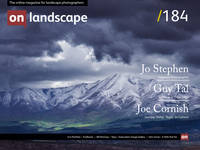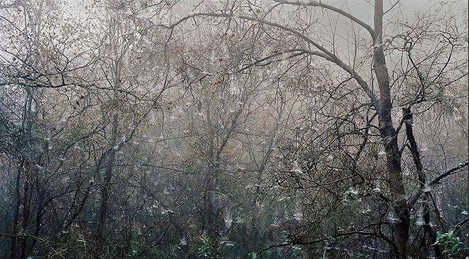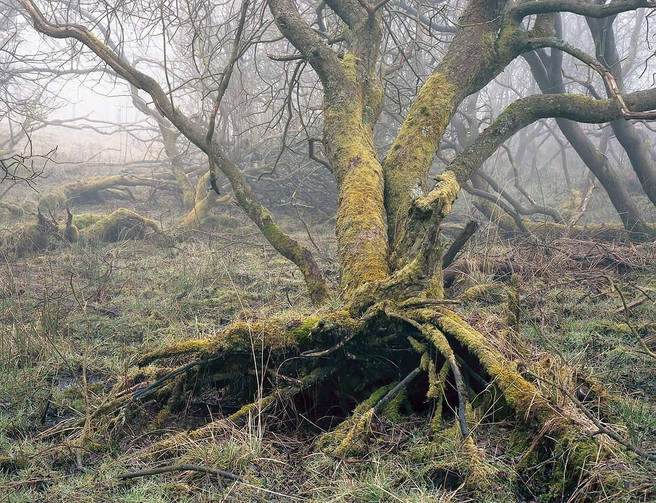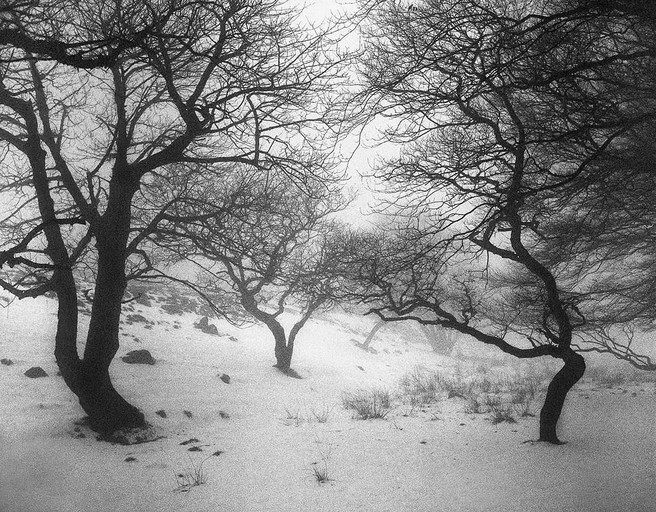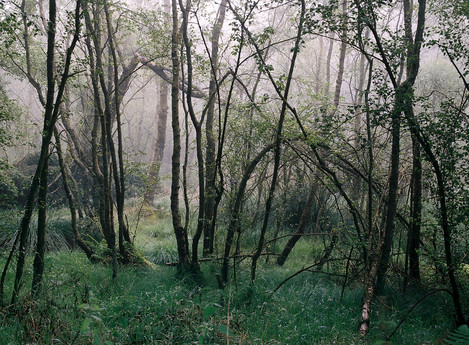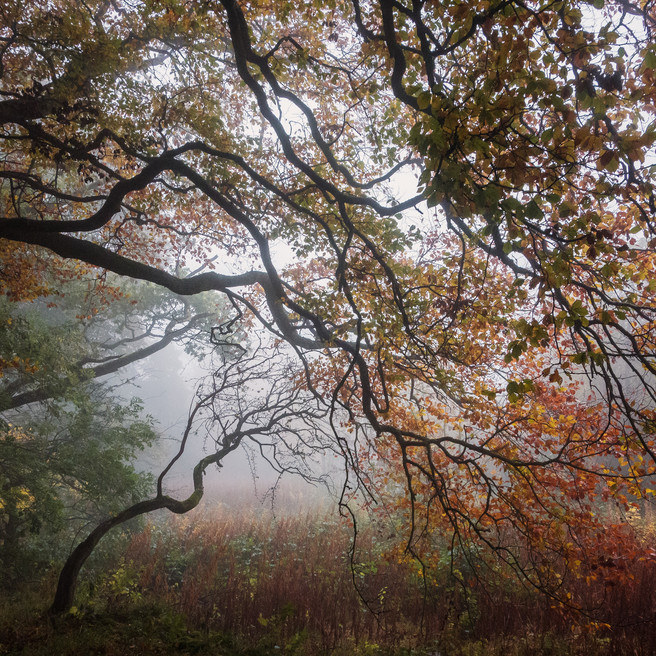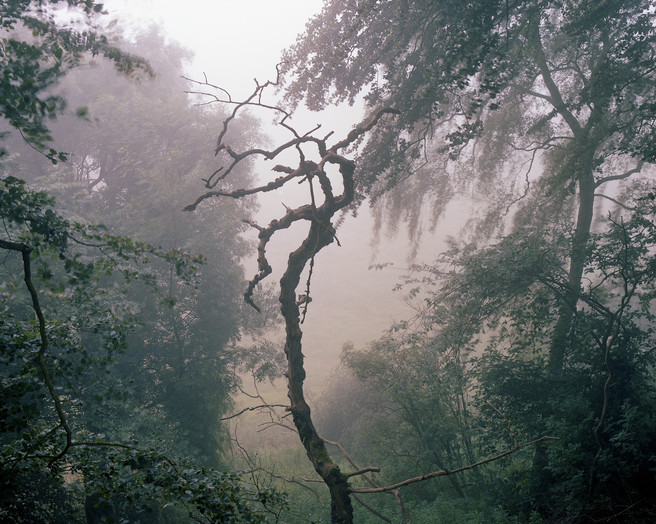My local woodland project
So, what is the project?
The project, or series of photographs, is from the local area where I live, West Lothian. West Lothian itself is geographically quite a small county, situated in the central belt of Scotland. It's not my home county, that is County Antrim in Northern Ireland; However, it's somewhere I know well, that I have met a lot of wonderful people in and where I have chosen to raise my family.
Scotland itself is well known for the drama it conveys through its stunningly beautiful landscape and the diverse and intricate weather. However, the terrain of West Lothian is less 'eye-catching' and one has to look more carefully for images. This certainly didn't come easy to me at the start.
So why did I start this project?
Well, to be honest, it was almost forced upon me. Before its creation, I very much enjoyed chasing the larger scenes in the Northern territories of the Scottish Trossachs and Highlands.
However with an increased workload, family and young children and the ever-increasing fuel costs, I was driven to find photographic possibilities closer to home. I'll be honest, I resented this greatly at the beginning. I didn't want to drive or walk a mile from the house to see what I pass 10 times a day in the car. I wanted to chase the light in areas I'm so lucky to live near to, but I had to stick to the new plan.
Although the immediate visual 'grab' wasn't there from the low key terrain, I began to notice that West Lothian had a number of little woodland areas, owned largely by the Woodland Trust and other conservation agencies. I also began to notice that they offered their own possibilities for exploration and their habitats changed as the seasons developed. And within myself, I felt at ease and increasingly absorbed with the subtle views that were so close to my front door. So, since 2013 my whole mindset changed towards my natural landscape photography.
And now here we are, six years down the line. I have a real body of work created, consisting of approximately 50 images I am truly happy with. All the images have been taken within approximately 10 miles of the house and have been taken in short outings to the woodland, often before or after work. The support I have had for the work has been so wonderful, especially from others that specialise in the field of woodland photography. Without this continual support, would the series still be ongoing? Doubtful, as external 'drive' was greatly needed in the early days. Nearly all of the images have been taken on colour negative film, and whilst medium or process is not important, it has helped slow down my own approach to the project and has provided consistent tonal properties to the body of work.
Will the project ever be finished?
Maybe if I move house! However, I very much doubt it. Even when I visit a familiar scene, it is never truly the same as the previous time I set foot in the area. Over the next 12 months, I hope to print more and release a few limited edition box sets of images, however, the real enjoyment is just immersing myself in the familiar, knowing that I'm potentially adding to something I'm already proud of.
Tim Parkin: Having revisited these locations many times, what are the biggest changes you've seen?
John Irvine: The levels of deforestation at some of the locations have been a bit upsetting if I'm honest. There are a number of scenes that are no longer there. Whilst is it nice to have a negative of the scene, it is a bit of an awakening to the realisation of the long term existence of woodland areas.
In terms of intricate differences or changes, it is probably the lack of consistency in the seasons - especially with the mild winter we have had this year. I've pretty much given up on returning to scenes that have attracted me previously due to certain characteristics due to the fact that they'll never be recreated. The core form of the trees will often be fairly consistent, however foliage, leaf cover and the ever presence of mankind certainly do not remain the same.
TP: Do you have a favourite season or conditions to visit in?
JI: Not really if I'm honest. Due to logistical constraints, I rarely take pictures in Winter as I'm either at work or with family. Autumn is naturally a draw however I just shoot when I'm able to. This has been refreshing and doesn't pigeon hole the time of day I shoot in. I believe that this, in turn, makes me more creative and I feel that I don't go through the motions like I would if I always shot my images later Autumn/early November.
TP: Conversely, have you been surprised at some work created during 'lesser' conditions/seasons (mid-summer, harsh light, etc)?
JI: I feel that some of my stronger compositions have been in less obvious conditions as I don't have flamboyant colours, for instance, being the main draw to the image. I probably work harder during these occasions, and whilst I wouldn't say I'm overly successful, the reward when it does work out is often better.
TP: People are often worried about working in urban areas during anti-social hours - have you had any bad encounters?
JI: This hasn't been something I've ever really had to encounter. When I completed my Peace Walls project back home I was pretty careful regarding the logistics. I would often shoot during the long days of summer and would frequently be set up on locations at 5am, whilst people were asleep. The more natural based locations that were intertwined with an urban scene were often met with questions of interest and intrigue with some really lovely responses from people that you wouldn't expect. I did have to leave out a couple of locations that I would have loved to have photographed, however, this was a calculated risk due to employment/personal reasons.
TP: Did you bump into any other peculiar creatures (other than landscape photographers)?
JI: Ha ha, not really. In fact, on your point on landscape photographers, I have never met a single other person photographing a scene near to me during the woodland project. On reflection, that's hugely appealing and something I suppose I haven't thought a great deal about. The notion of me being the only person to have taken a picture of a particular scene brings a smile. This is not an elitist thing - as I still enjoy landscape photography of all forms, popular or otherwise, but more a quiet pleasure.
TP: Do you think your urban work in Northern Ireland has rubbed off on your local work at all?
JI: I would definitely say it has. Certainly, my images have been quieter than they were previously, in terms of tonal properties and the core forms within the compositions. My approach to thinks now has certainly got a more documentary feel, and I feel most satisfied, creatively speaking when I can combine nature and a documentary landscape.

